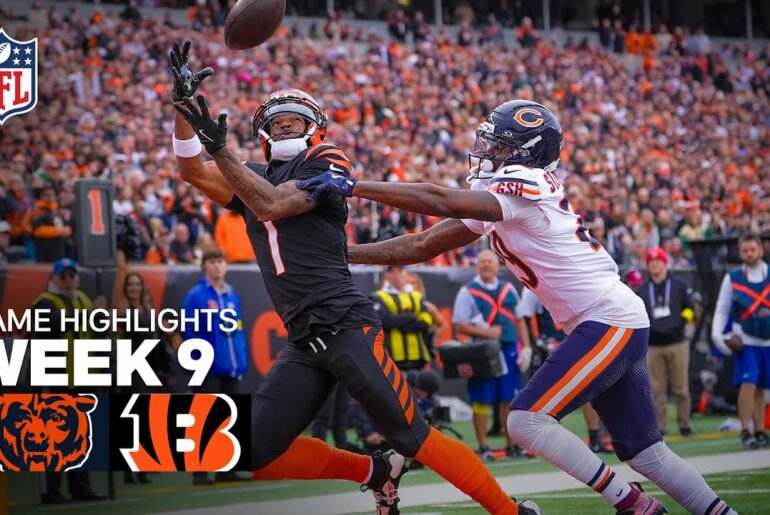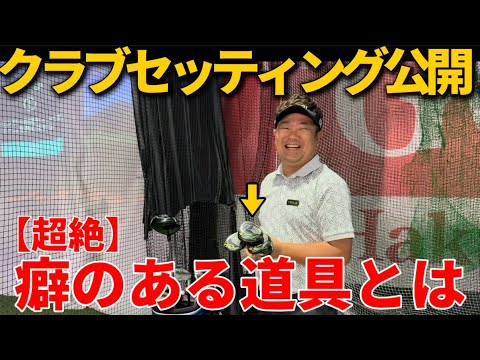Brian Campbell just won his 2nd PGA Tour event this year, also his second ever, at the 2025 John Deere Classic. He won on the first playoff hole and these are the clubs he used to claim that victory.
Driver: Ping G440 LST (10.5 degrees @9.4)
Shaft: Fujikura Ventus Black 6 TX (45.25 inches, tipped 1 inch, D4)
3-wood: Ping G440 LST (15 degrees @13.5)
Shaft: Fujikura Ventus Blue 7 TX
7-wood: Ping G430 Max (21 degrees @19.5)
Shaft: Fujikura Ventus Blue 8 X
Irons: Ping iDi (4), Ping Blueprint S (5-PW)
Shafts: KBS Tour 120 S
Wedges: Titleist Vokey Design SM10 (52-12F, 56-10S), WedgeWorks (60-L)
Shafts: KBS Tour 130 X (52), True Temper Dynamic Gold S400 (56, 60)
Putter: Ping Redwood Anser 2
Grips: Golf Pride Tour Velvet
Ball: Titleist Pro V1x
Hey, welcome back to Golf the Beex’s winning what’s in the bag where this week we’re taking a look at Brian Campbell’s winning bag from the 2025 John Deere Classic. Congratulations to Brian. His second win of the year. He won just a little while ago down in Mexico. Got a second career win here at the John Deere uh in a playoff with Emilio Grill. Uh only took one hole. He uh he wins it. So, congratulations to him on his second win. We’re to jump into his bag. We’re going to start at the top. We always do. And it is the He’s a Ping staff player. So, it’s going to be pretty much all Ping here, but we’ll start with driver, and it is the Ping G440 LST. Uh, so this is a low spin, kind of lower trajectory, more neutral bias club head from Ping. Uh, it’s like a slightly bit more neutral looking from a dress. Uh, the shaping also, in my eye, is a little bit more compact as well. Uh, it is a 10 12° head, but he is playing it at 9.4°. So, on the Huzzle here, it is set to the minus one position, but also the flat position. So on the ping uh adapter, you know, there’s the pluses, the minuses on there, big and little. Then there’s kind of some blank spots on the back end. Those blank spots are flat settings, uh, which makes that lying a little bit flatter, which promotes maybe a little bit more right starting line or a little bit more slightly fade bias ball flight. Uh, so this one here, the rear weight, uh, is set to standard. It’s actually a 32 g weight, but set neutral in the back. Uh, and it is shafted up with a Fuji Cura Ventus Black 6TX. Now, this is the 2019 model. uh not the brand new one with VLOOC core plus. This is the original VO core. Uh and this is a TX model which means it’s probably a little bit stiffer uh in terms of you know slight spots in the shaft but nothing crazy. Uh I don’t think Fu Fuji Korea goes TX as being like a full flex stiffer uh than the standard X. Uh but the TX typically are either like a little bit lower torque or just a little bit tighter somewhere uh in the shaft. Now, the vented black is low launch, low spin, ultra stiff handle section, ultra stiff tip section, and that middle section is no slouch either. It is also very stiff. It comes in at 68 g and 3° of torque. Now, Brian plays his driver at 45.25 or 45 and 1/4 in long. Uh he tips the shaft 1 in and he plays it at a D4 swing weight. Now, move on to the next club in this bag, and it is a 3-wood. And the 3-wood is going to be the matching Ping G440 LST. So, again, this is actually a titanium 3-wood head. So, titanium body, titanium face, uh, a little bit more penetrating ball flight, better ball speed, a little bit lower spinning for those high-speed players who need that or want that out of their 3-wood. This is a 15° head, but his is playing at 13 1/2°. Now, the Huzzle is set to minus one and flat. Um, so again, you’re minus one degree. It’s in that flat setting. A little bit more right starting line when you set it into that flat. Uh, now technically I think that’s one down one degree in that setting. Uh, but it’s measured out at 13 and 12. So this may start as a 14 1/2 degree head uh when he turns it down. Now this one here is shafted up with a Fujicuro Ventus Blue 7TX. Uh, so again, the TX model, a little bit lower torque, a little bit tighter, uh, but not nothing crazy different than the 7X that’s out there in the Ventus Blue. This is a mid-launch kind of low spin shaft from Fujukur. Again, 2018 model, uh, not the brand new one. Little bit softer handle section, very stiff tip. Uh, and the midsection is a little bit stiffer as well. This one comes in at 79 12 g with 2.9° of torque. Uh Brian plays this thing at 43 in long and it’s tipped 1 in with a D0 plus swing weight what Ping puts on it which makes me think it’s probably like D0.5. It’s probably in between D0 and D1 for the swing weight there. So a little bit lighter on a 3-wood which is interesting because he plays, you know, D4 and driver. Uh a little bit lighter in that 3-wood which is pretty interesting. But hey, it’s all in what works for your swing and gets the feel dialed in to what you like. Now from 3-wood, he then moves to 7wood. And the 7wood is the Ping G430 Max. So this is the previous generation G430. Uh it is a the Max version cuz that’s what they make the 7wood in. So definitely a little bit more forgiving, a little bit bigger head. Uh you know, bigger profile when you look down on it. It’s a 21 degree head, but he is playing his at 19 1.5°. Uh so this one is the Huzzle set to the big minus. Now the photo you see here uh on on YouTube is a of it in the flat setting. Uh, and that was a a previous uh setup from the RBC Canadian uh that we had photos from. He is now actually playing in the big minus uh with actually a slightly different shaft. That one before was the uh Fujicuro Ventus TR blue. The one in his uh club this year, the shaft was the Fuj Fujikuro Ventus Blue. So, the standard Ventus Blue in an 8X. Uh so, the Ventus Blue is going to again have a little softer handle, very stiff tip, mid-launch, low spin. Uh it’s got a little softer handle than the TR Blue. So, a little different setting than the exact photo. Um, but he probably just took the head off and put a new shaft in, let’s be honest. Uh, but this one here, that Fuji Avent is blue 8X comes in at 86 g and 2.8° of torque. Uh, he plays this one at 41 in long and is tipped 1.5 in with a D1 swing weight. So, 3-wood, 7wood, very similar if that slightly lighter swing weight. Now, moving to irons and he’s got a little bit of a combo set. Uh, but the first uh iron in his bag is going to be the Pink ID. Uh this is the brand new uh driving iron we’ve seen on tour. We don’t know anything about it yet. Ping hasn’t released any of the details. Uh we’ve only seen the images out on tour, but this is kind of looks to be like a hollow body design. Uh it probably has a thinner face on it that adds a little ball speed. Uh it’s very versatile in terms you can probably hit it higher, lower, all that. Uh it looks like it might be replacing the eye crossover. No real word yet from Ping on what this thing does. Uh but we don’t know any of the real technical specs other than we can see the photos. uh and it’s there, but uh it is a utility iron from Ping that hopefully we’ll see sometime later this year. Now, this is the four iron version, which is 23 degrees. Uh and it is shafted up with a KBS Tour 120 stiff. Yes, a stiff. Uh guys on tour don’t always play extra stiff, but the KBS Tour 120S, 120 g steel shaft, uh kind of mid-launch, uh kind of mid to mid- low spin depending on the player. Really good smooth feel. Now, Brian plays this one at 38.25 in long. uh and a 58 and 3/4 uh degree lie angle. Uh and it is D1 plus uh in terms of the swing weight. So again, I think this is going to be like D1 and a half uh would be my guess or somewhere inside uh you know, a little bit beyond D1 in terms of that swing weight. So interesting one there for the 4iron and then the five through pitching wedge. He is playing the Ping blueprint S iron. So these are the forge cavity back irons. Uh Ping’s had out for a little bit now. Uh they’ve been huge on tour. As soon as they hit, it seemed like a bunch of people switched over into the Ping Blueprint S’s. Uh, but these are some really playable CBS that feel good, sound good, they look good. Uh, to me personally, I think they’re the best looking Ping irons they’ve ever made from a dress, from behind, anywhere. I just think they’re absolutely spectacular. So, actually somewhat a little bit forgiving, slightly longer blade length, uh, but a really great iron there. They’re forged from 8620 carbon steel, which again gives you that great soft feel, good responsiveness, uh, on those shots. Uh, now these are shafted up with KBS Tour 120 stiff. So again, much like the IDI, these are just stiff shafts. But again, it all comes down to feel for these guys and what they like the feel of. The S may launch or spin just a touch more. Uh, but this is again a mid mid-launch kind of mid to mid low spin uh shaft. Really smooth, great feel to it. Been around a long time. It’s kind of a classic staple uh in the KBS lineup. Now we move to wedges. And wedges are going to be a little bit different. he is playing. The first wedge in his bag is going to be the Titalist Voki SM10. Uh this is a 52.12F. So the high bounce 52 degree. Uh they make a standard or a regular bounce f grind that I believe is 8°. Uh and then they have the 12 degree for the higher bounce for players who read a little bit steeper uh or play a little bit softer conditions. It’s going to offer just a smaller divot size uh from that sole. Now this one uniquely is shafted up with a KBS Tour 130X. Uh, so this is the heavier, stiffer version of what he plays in his irons and his utility iron. And he probably just moved to this, I would think, not necessarily for the launch and spin or that stiffness profile. It’s probably just that he’s going to wants a similar feel to irons, but wants to go a little bit heavier. So 130 g extra stiff, uh, but it’s still KBS tour profile. So stay kind of mid-launch and mid to mid low spin. The next wedge in his setup is going to be a sand wedge at 56 or a titleist Vokei SM10 56.10s 10 S grind. Uh so the S- grind is kind of a kind of fuller sole, a little bit of trailing edge uh relief on the back. So you still get the full sole uh playability out of softer conditions, a little smaller divot, uh good float out of the traps, but you have some trailing edge relief where you can open that face a little bit without the leading edge coming off the turf too high. Uh so on that tight those tighter lies, you can hit a little higher wafted shot or a little open face shot without having to worry about that leading edge catching too high on the ball. Uh, now this one here is shafted up with a True Temper Dynamic Gold Tour issue S400. Uh, which I bet you’re shocked to know that it’s there because the S400 seems to be in pretty much every wedge uh, setup we talk about. Uh, but this one here, 132 g, true temper dynamic gold feel. Uh, and that weight sorting tolerance of plus or minus half a gram is pretty pretty awesome. Now, the last wedge in his setup is going to be his lob wedge. And this is a Titalist Voki wedge works 60 L grind. Uh, so the LG Grind is kind of the lower bounce version of the V grind. V Grind is kind of probably one of the most popular uh Vokei grinds that they do in the Wedge Works lineup, but the L grind is the lower bounce version. Four degrees of bounce and uh it can play a little bit more bounce than that for certain players. Uh the bounce on this one is a little bit pushed forward in the head. So depending on your release, this may play a little bit more mid bounce for you. Um now this one here still has a ton of trailing edge, heel and toe relief. So that leading edge stays down whether you open the face, play it square, uh you can really manipulate it a lot around the grains without that leading edge coming too high off the ground, hit a variety of different shots uh on tight lies, soft lies, whatever. It’s extremely versatile there. Uh this one again shafted up with a true temper dynamic gold tissue S400. So again, 132 g kind of mid- low launch kind of on the lower spin side offering a little bit more penetrating flight and better control coming into the green. Now for putter, he’s playing something a little bit different, a little bit older. This is the Ping Redwood Answer 2. So, the Redwood series was an older series of putters that Ping brought out that was fully mil from a solid block of stainless steel. Uh, now by by fully mil meaning the neck and the head, everything was milled out of it. And that was kind of the redwood thing was that the hoszle comes out of the head, but they were all mil together out of one solid chunk in order to give better feel, responsiveness, all that. Now, at the time when those came out a while ago, that wasn’t done a whole lot. Nowadays, it’s done kind of all the time or or a lot of situations. Back then, there wasn’t really. It was really the necks were either welded on or attached on in a different way. Not many companies were actually milling the necks into the heads like Ping started doing. So, this series was actually really underrated. I feel like these putters for a long time were kind of undervalued on the secondary market. Uh, but a great putter. Uh, made out of uh I believe it’s 303 stainless steel. Uh, but mil solid there. The face, you can see, is milled very, very shallow. So, it’s going to have a little bit crisper, firmer feel off that, maybe a little bit more click to it, uh, that some players like. Now, the answer two style, uh, is, of course, going to be a little bit boxier, uh, a little bit sharper corners. The bumpers aren’t going to be quite as tall and rounded. Uh, but and it’s also it looks like it has just a slightly wider look to it from face to back. Just a single sight line on this one uh, for Brian. And this one here is shafted up with a just a standard steel shaft and a grip. Uh that is the Ping Pingman the PP58 Pingman grip which you can uh see on there the white lettering that says ping with the little guy uh with the putter. This is kind of got like a really velvety type feel to it. Really soft rubber uh at least played by a lot of people. It’s really on the thinner side but he is playing the tour M version which is the mediumsiz version. So or midsize version. They make a tour L and then they make a standard one as well. So the M is a little bit bigger version. Uh but nice pistol shape to it. Uh and really one of those popular grips. I think when Tiger was using it for a long time, everybody went out and bought a PP58 just in the blackout version. Uh so a really really popular grip out there. But the tourm version, uh Brian plays his 34.25 in long, 2° of loft, and a 70° lie angle. Now for grips on the rest of his clubs, he plays the Golf Pride Tour Velvet. So uh we talked about this grip before. Kind of a a standard brushed rubber from Golf Pride. Been around for absolutely ever. Nice herring bone style texture to it. offers a good combination of good traction, tackiness, and wet weather control. Now, for the ball, he’s playing the Titus Prov1X. So, this is going to be the higher launching, higher spinning ball from Titalist, especially compared to the Prov1. It’s also going to have a little firmer feel to it. So, that is Brian Campbell’s winning in the bag from the 2025 John Deere Classic. Congratulations again to him on his second win of the year, his second career win as well. He’s having a good 2025. But, uh, that is it for today’s or this week’s episode. Check back next week. We’ll jump into the next players winning What’s in the bag.








3 Comments
Piiiiiinng Man Ping Man grip. Is now stuck in my head
L grind is a lower bounce M. T is the lower bounce V
Great video as usual! Were you guys unable to get Aldrich Potgieter's winning WITB from the week before?